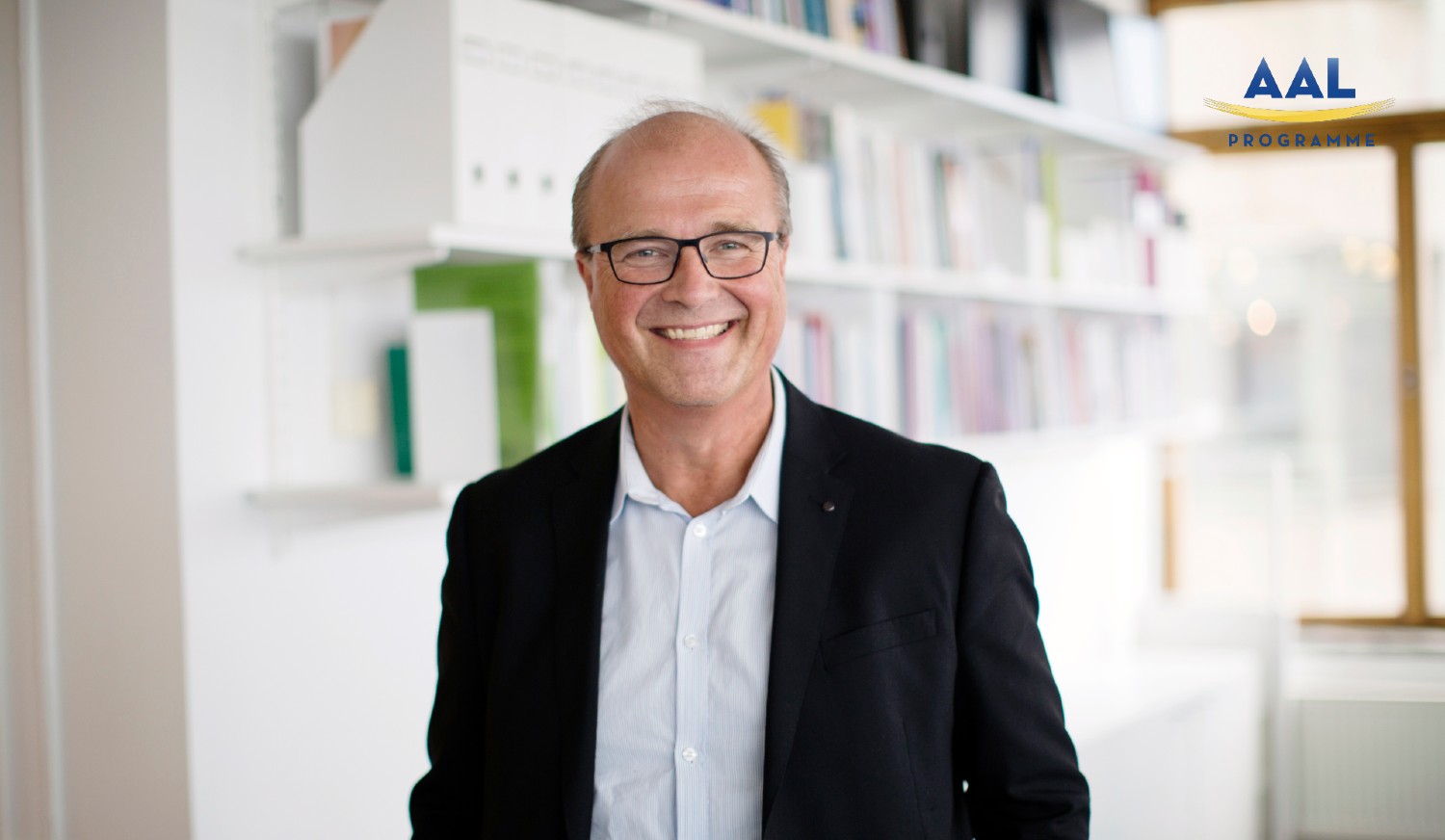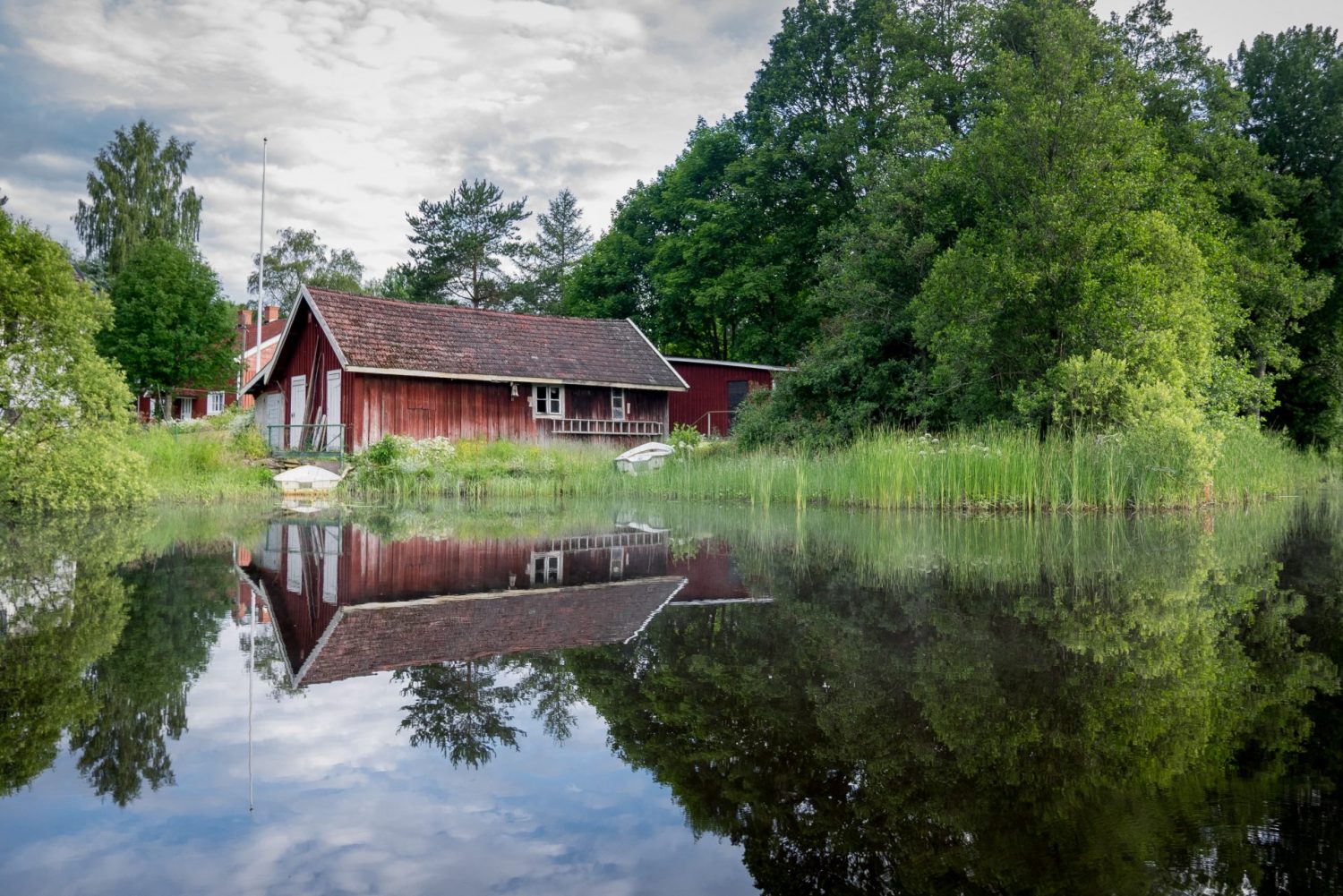The Nordic success in remote health technologies
In February, the AAL Programme had the opportunity to talk with Bengt Andersson, the senior advisor of the Nordic Welfare Centre to discuss the recent report on remote technological solutions in health and social care in the Nordic countries focusing on rural areas. Some of you might remember Mr. Andersson as one of our keynote speakers in the last AAL Forum in Denmark presenting this very study. Now the publication has been translated into English and is available for everybody.
The AAL Programme was interested to hear from Mr. Andersson about the selected digital solutions and their impact on the local health systems, as well as the work of the Nordic Welfare Centre and his thoughts on the missing pieces of the ageing and wellbeing debates both in Scandinavia and in the rest of Europe.

Photo: Bengt Andersson
The Nordic Welfare Centre
The publication was issued by the Nordic Welfare Centre, an institution, which is a part of the Nordic Council of Ministers’ social and health domain. The Centre provides tools to assist policymakers in improving the well-being of the Nordic populations. ‘Established after the Second World War (…), we are an institution that works with social ministers and health care ministers in the Nordic countries,’ explained Mr. Andersson. The results of their work are used ‘for political decisions at national, regional and local level in the five Nordic countries, in Åland, Greenland and the Faeroe Islands.’
The Centre works as a tool of regional cooperation and knowledge-sharing through compiling and disseminating knowledge with a particular attention to innovative solutions in municipalities and organisations. He further explained that in their work, the researchers ask the following questions:
‘Are there lessons to be learned from how different countries have met a challenge? If so, it is the Nordic Welfare Centre’s mission to disseminate that knowledge and to provide inspiration on how others can meet similar challenges and find solutions. At the core of the Nordic Welfare Centre’s mission lies both conveying knowledge and offering practical tools for improvements.’
The Scandinavian model
The fact that this institute is called the Nordic Welfare Centre is not accidental. Scandinavian countries are known for their history of strong civil societies built on openness and a flatter hierarchy contributing to the emergence of the modern Nordic welfare model. Mr. Andersson explained that ‘the Nordic welfare systems share many similarities, which offers us opportunities to learn from each other.’
He told the AAL Programme that the cornerstone of the Scandinavian welfare systems is ‘financing of health and social care through taxes. What we have in common is that there is no other cost than taxation for getting the services from the healthcare system and the social welfare system (…) It does not matter who you are or where you live or what your history is, that’s the principle we have in the Nordics, that we should have the same opportunities to have healthcare and social welfare.’
The welfare systems in the region have been successfully working for many decades. Partly, as a result, it has also fostered higher living standards and increasing life expectancy, which in all of the Nordic countries is estimated from 80 to 84 and increasing. Consequently, individuals live longer lives with the proportion of the population above 60 increasing by year. However, with the current model, it also means that the burden on healthcare systems is growing continuously. Therefore, the debates on using the technology to lessen the impact on the states’ ability to provide good quality care of the ageing populations are commonplace in the region.

Gällaryd, Värnamo Ö, Sweden, photo by Jon Flobrant on Unsplash
While there are many who remain healthy for longer time, there is still an increasing number of individuals who need support both in health and social care. Both the AAL Programme and the Nordic Welfare Centre have highlighted the role of technology and innovation in addressing these challenges. One of the results of the attention of this issue is the work carried out by the Nordic Welfare Centre.
The study was carried out to map distance-spanning solutions for healthcare and social care applied in Nordic municipalities across the region. Overall, the 24 solutions have shown their effectivity, by being fully implemented, accessible and working for a longer time have been in both health- and social care. Mr. Andersson explained that it was important to show that these solutions are well-implemented and fully working to show the potential and already existing opportunities for digital services.
‘These 24 solutions are not pilot projects, they are not projects at all, actually. They work in the context they are in, and the region they are in. (…) What our message really is, is if all regions and all municipalities implement these 24 solutions, then we have solved a lot of demographic challenges we have right now and what we have coming up for the next 5-10 years.‘
The collection of these technologies cover tool in the domain of remote treatment (telemedicine, consultations via online tools), remote monitoring (sensors, cameras, reminders), remote meetings, as well as new and innovative solutions for digital services in both healthcare and social care.
The focus on distance-spanning solutions are particularly important to such regions as the Nordics, were the population is distributed through sparsely populated areas. At the same time, high quality services need to be ensured and remain accessible due to the ageing population.
However, Mr. Andersson suggested that these solutions can be of use in other socio-economic contexts as well, as distance is not always the only issue in receiving the services, as for example in mountainous areas the issues are similar. ‘Maybe in some systems it would be easier than in our Nordic welfare model, so it is really about seeing it from different perspective, understand how the system works and see where it could fit in. But this is not rocket science, this has a lot do with change management.’
The team behind the report started out with 300 products and services, but in each country, the appropriate organisations carried out a meticulous mapping exercise to find the already established solutions that are also accessible to the citizens. ‘The process lasted 6-7 months,’ Mr. Andersson told the AAL Programme as it was important for the researchers to evaluate the success and usability of each of the solutions in their given contexts and have proof of their benefits to the local communities.

Vestvågøy, Norway, photo by Kym Ellis on Unsplash
Change management is key
An issue that has been observed in the ageing domain is that often technology is there, but the problems hides in creating conditions that increase acceptance to actually using them and changing habits of end-users. When asked, whether that has also been the case in the Nordics, Mr. Andersson highlighted that ‘what we have identified, is that that’s not a huge problem, when you talk about the target group, but it is a huge problem when you talk about the staff.’
He acknowledged that, when people and communities have to change long-established habits, a key to battle these stereotypes of new procedures and solutions is change management. Therefore, Mr. Andersson highlighted the role and importance of the decision-makers and healthcare personnel in facilitating the increase of using technologies in their work.
‘We are not so digital when it comes to staff, and people working in healthcare and welfare. The healthcare staff and people working in social welfare, they don’t (always) want to change the way they do things. They think ‘we have always done things like this’, why do we have to change them? It is about insight. It is about agreeing with stakeholders to make this type of change. So, that includes participating in conversations and talking with the staff how to do this.’
It is very much about the decision preserve the services and really understanding that there are other ways to provide them.
Nordic success in digitization
A necessary aspect of implementing new ways to provide services with digital means is the appropriate skills. All Scandinavian countries are the leaders of European according to the recent digital economy and society index results. When asked about, how the Scandinavians have achieved such high level of digital skills, which often is an issue, when attempting to introduce digital solutions elsewhere in Europe, Mr. Andersson stressed the importance of the overall digitization of society, in the form of general public services and businesses and the importance of strong private companies that foster technological advancements and practices, such as Swedish Skype or the Finnish Nokia.
Moreover, introducing new, sometimes unheard solutions and having the technological advancement is not always enough to ensure a successful implementation of new services. The human factor is still very much at the centre of any 21st century invention. When looking at the successes of the Nordic region, one can potentially draw the parallels of the importance of the welfare society and the high trust levels amongst the citizens.
‘That is one of the things about the Nordic culture, it is built on trust. All of our society and in our Nordic economies is a lot about trust, we trust in our model, we trust in each other. We don’t think that the authorities, the government or the national organisations have evil thoughts what to do with us.’

Klitmøller, Denmark, photo by Marc Najera on Unsplash
This is where the trust to the political institutions comes into play, and as Mr. Andersson put it, the Nordic countries and people there have the exact opposite problem.
‘Yes, well in fact, all the Nordic countries have various frustrations about this the other way around, because the citizens expect and think that the authorities have all our health information connected and available for health practicioners, but somehow we have not succeeded in that.’
When asked about the further potential of introducing new solutions for the Nordic health systems, Mr. Andersson highlighted the chronic diseases, such as cardiovascular diseases and the prevention of managing the social isolation, which is proven to also have an effect on physical health. This shows that there is still a long way to go to address the needs and demands for a greater array of digital solutions in health and social care in Europe.

